I was in 11th grade when Mrs. Barrett was my English teacher at Poway High School. Around Halloween time, we studied “The Fall of the House of Usher” and she mentioned that the punctuation changes the rhythms of the story to create the intensity of the climax. To celebrate Halloween, and to honor the fine work done by thousands of educators teaching Edgar Allen Poe this time of year, here’s some statistical analysis about what Mrs. Barrett said. Look at the count statistics by paragraph for the punctuation that Poe reserves for just the right moment:
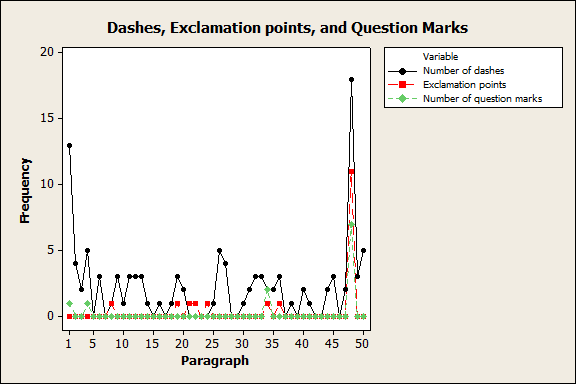
There are some noticeably unusual moments on this graph, but visual impressions can be misleading, depending on scale. We should try to do something more rigorous with our statistical analysis. We should also use the number of punctuation marks per word, so that the punctuation doesn’t look unusual just because a paragraph is longer. Let’s look at these punctuation marks in Minitab Statistical Software with Laney P’ Charts.
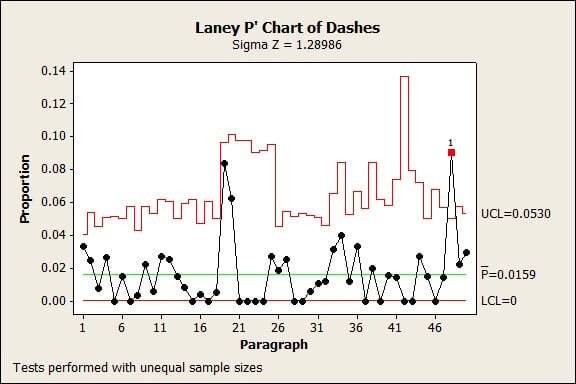
In the chart of dashes, notice that the proportion of dashes in the first paragraph is not unusually large, even though there are so many dashes (13). That means we made a good choice to look at the proportion of dashes per word instead of the number of dashes.
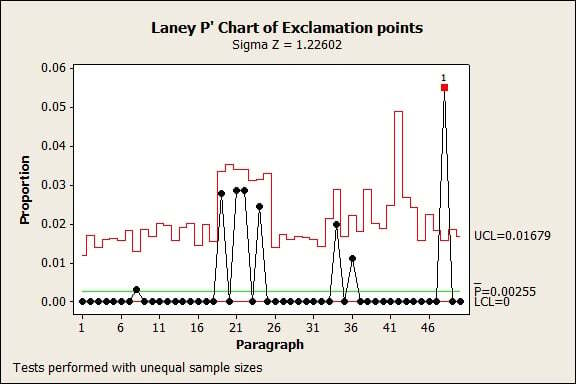
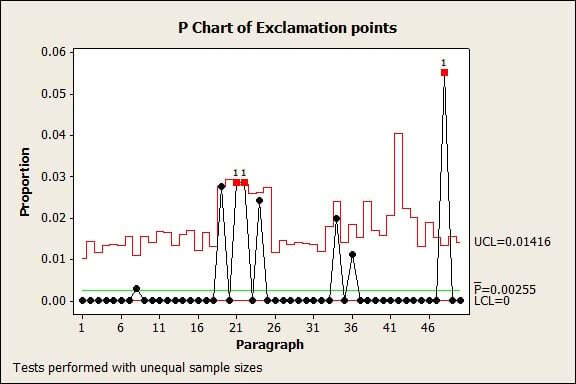
In the Laney P’ chart, the exclamation points look the way we would expect based on the plot by paragraph number. The regular P chart finds signals that two additional points are unusual. These signals occur in the middle of Roderick’s song, where the use of a single exclamation point in a short paragraph creates an unusually high proportion, even though these paragraphs are not particularly dramatic in the story. In this case, the Laney P’ chart is superior because it does not signal any false alarms.
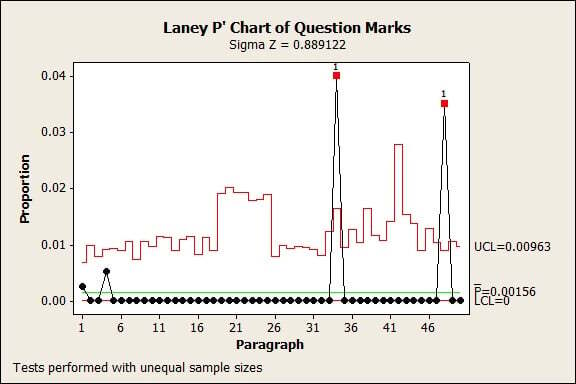
For question marks, two paragraphs stand out in the statistical analysis, both dramatic. In the first unusual paragraph, Roderick throws open a window to expose the tempest outside. The second unusual paragraph is the climax of the story.
Across all three punctuation marks, it’s the climax of the story that stands out in the statistical analysis. In the third to last paragraph, Poe uses 18 dashes, 11 exclamation points, and 7 question marks. While Poe uses dashes frequently, it’s never as frequent as when Madeline reaches the door, and Roderick’s lofty reason topples off its throne forever.
“Not hear it?—yes, I hear it, and have heard it. Long—long—long—many minutes, many hours, many days, have I heard it—yet I dared not—oh, pity me, miserable wretch that I am!—I dared not—I dared not speak! We have put her living in the tomb! Said I not that my senses were acute? I now tell you that I heard her first feeble movements in the hollow coffin. I heard them—many, many days ago—yet I dared not—I dared not speak! And now—to-night—Ethelred—ha! ha!—the breaking of the hermit’s door, and the death-cry of the dragon, and the clangor of the shield!—say, rather, the rending of her coffin, and the grating of the iron hinges of her prison, and her struggles within the coppered archway of the vault! Oh, whither shall I fly? Will she not be here anon? Is she not hurrying to upbraid me for my haste? Have I not heard her footstep on the stair? Do I not distinguish that heavy and horrible beating of her heart? Madman!”—here he sprang furiously to his feet, and shrieked out his syllables, as if in the effort he were giving up his soul—“Madman! I tell you that she now stands without the door!”
Want to see more about Laney P’ charts? Check out what David Laney himself shared with Greg Fox and Eston Martz. What better way to spend Halloween!?



